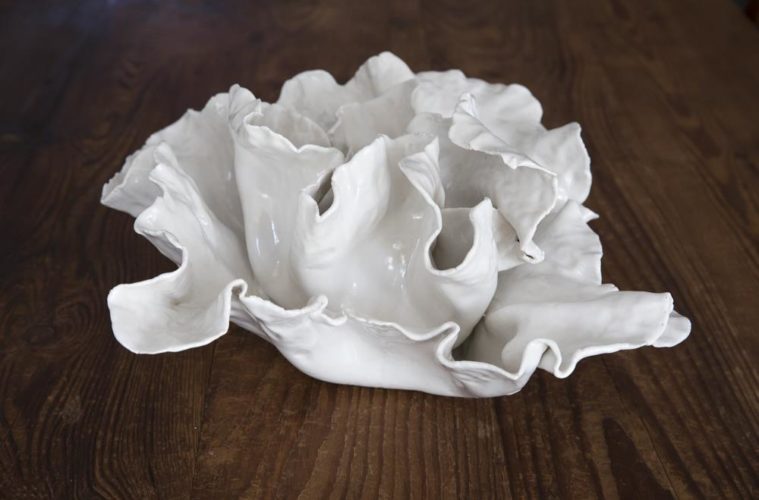Anna Kasabian molds flowing works of art from porcelain
Anna Kasabian never consciously set out to create abstract echoes of the natural world in her art, but that’s exactly what sprang from her hands the first time she touched porcelain. Forgoing the potter’s wheel and using only her hands, she worked a piece of raw porcelain into a tiny floral form and loved the delicate shape. From there, other shapes followed, figures that recall the undulating beauty of ocean waves, the gentle contours of antique rose petals, or the gentle undersea swaying of kelp.
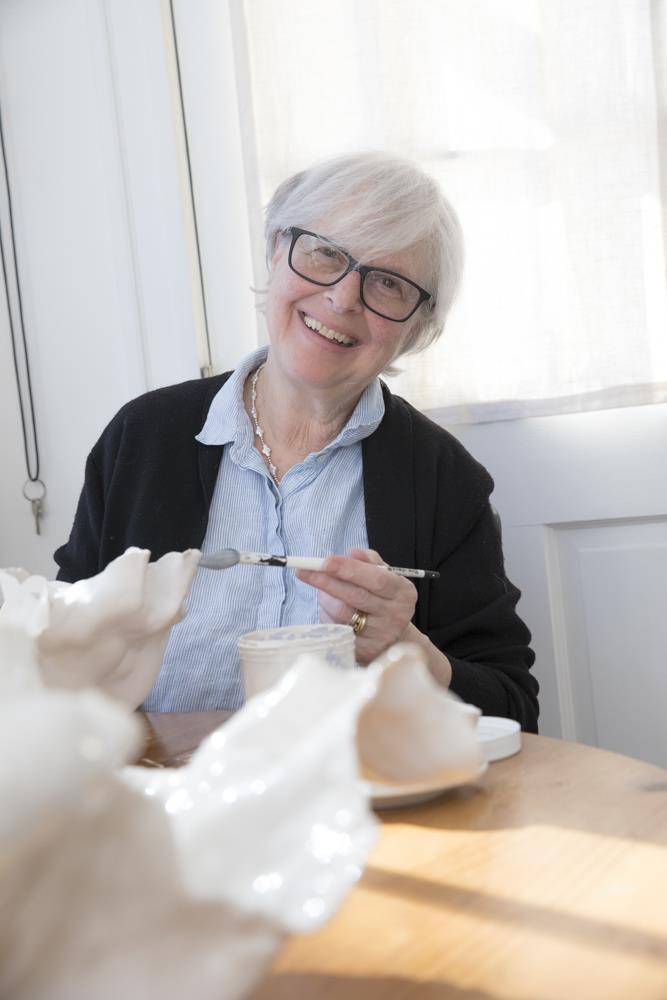
Now, Anna Kasabian Porcelain has become a favorite of designers and art collectors, who feature her work in art installations, public space commissions, galleries, private homes, and other venues across the country.
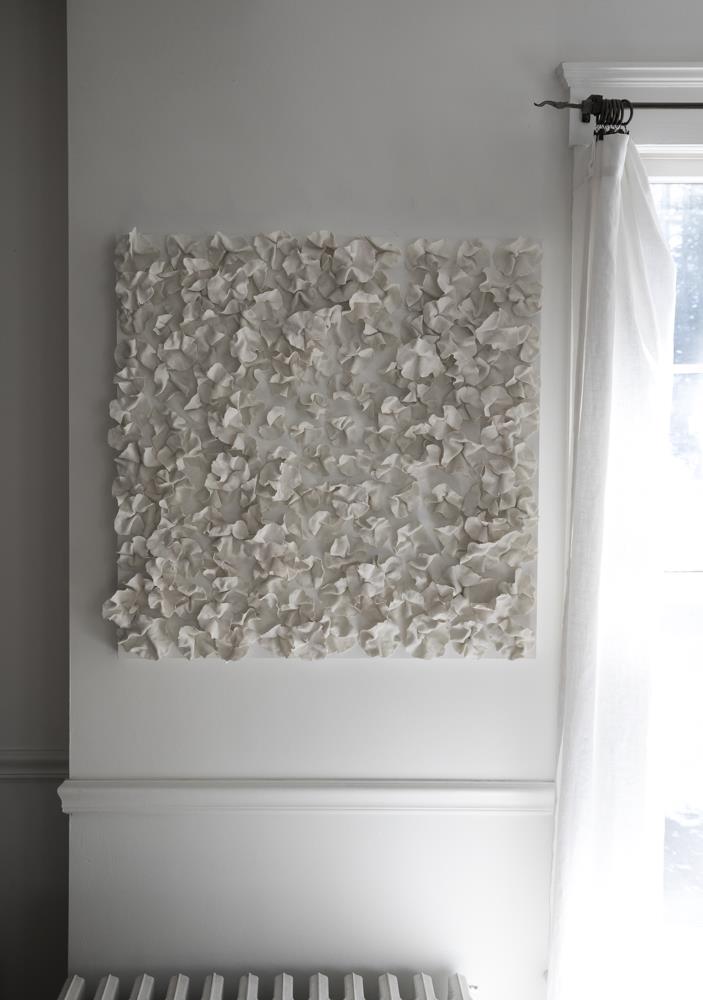
While her early forays into hand-shaped porcelain were small and functional, like tabletop bowls and trays, Kasabian’s work has grown with her talent and confidence. Today, she creates large-scale decorative wall and table sculptures that command a space with equal parts drama and elegant beauty.
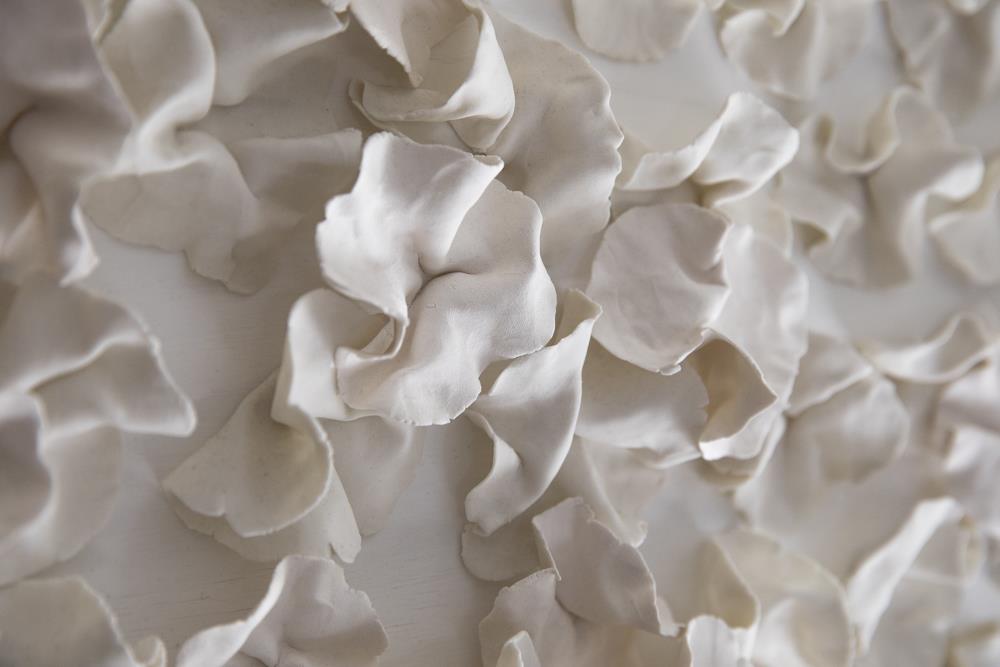
No matter the size or utility of the pieces she’s created, though, a few things have remained constant. First and most important is Kasabian’s love of porcelain. “The minute I touched porcelain, I knew that I would never use another material,” she says. “The porcelain allows me to make these dramatic twists and turns, but also I can go really wafer-thin, which really captures my imagination.”
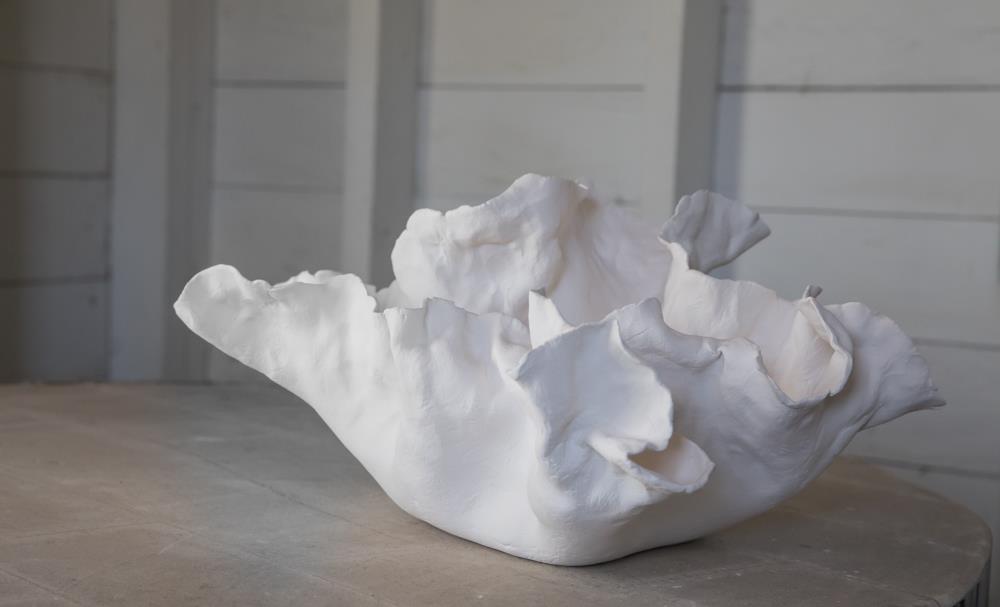
The delicate fluidity of Kasabian’s pieces, and porcelain’s ability to be shaped in such a way, is part of what makes her work so striking, as though each piece was captured in mid-motion. But it’s also what makes the process of creating the pieces so exciting and inspiring for the artist. “It’s an intoxicating material. It’s challenging. It’s fussy. It can crack,” she says. “You begin to have this very intimate relationship with porcelain.… I understood its little quirks.”
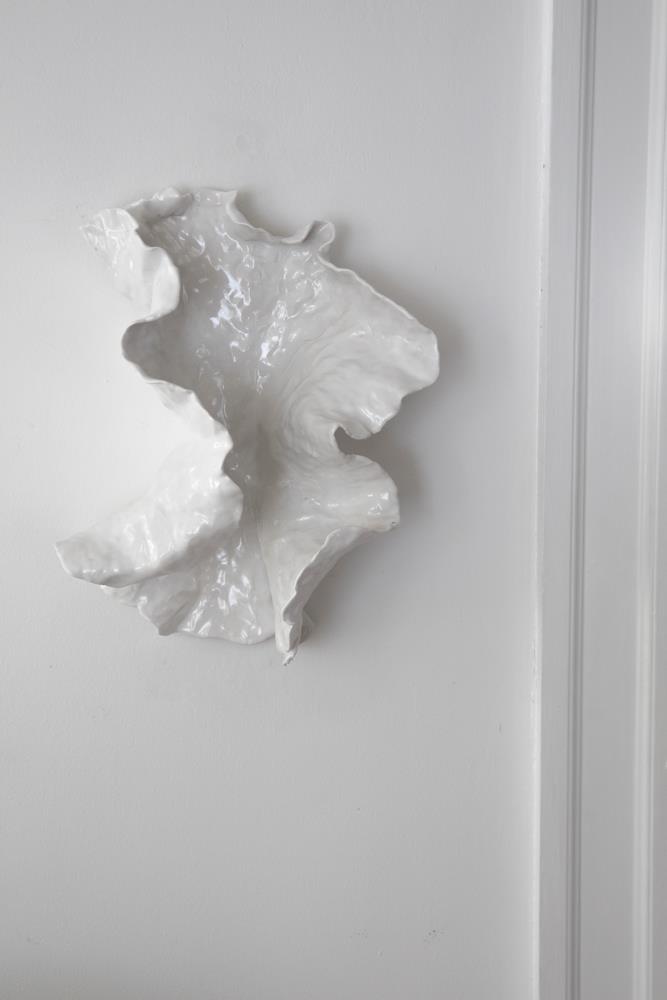
One of the key ways she’s grown to understand and even relish those quirks is through shaping the pieces by hand, which allows her to create the evocative contours and movement that have come to define her work. “What I love about hand-forming objects is also the quiet and intimacy of me working with the clay,” she says. “Hand-forming objects also gives me the opportunity to change the direction of a sculpture. In essence I feel it gives me more freedom and control at the same time.”
That synthesis of freedom and control is evident in the organic way that the pieces take shape. Kasabian works from her studio in Manchester-by-the-Sea, a setting that’s rife with inspiration. “I find that living a very uncomplicated, quiet life is the fuel for my imagination and creative energy,” she says. “Living on Cape Ann, with its beautiful landscape, enriches my life and art.”
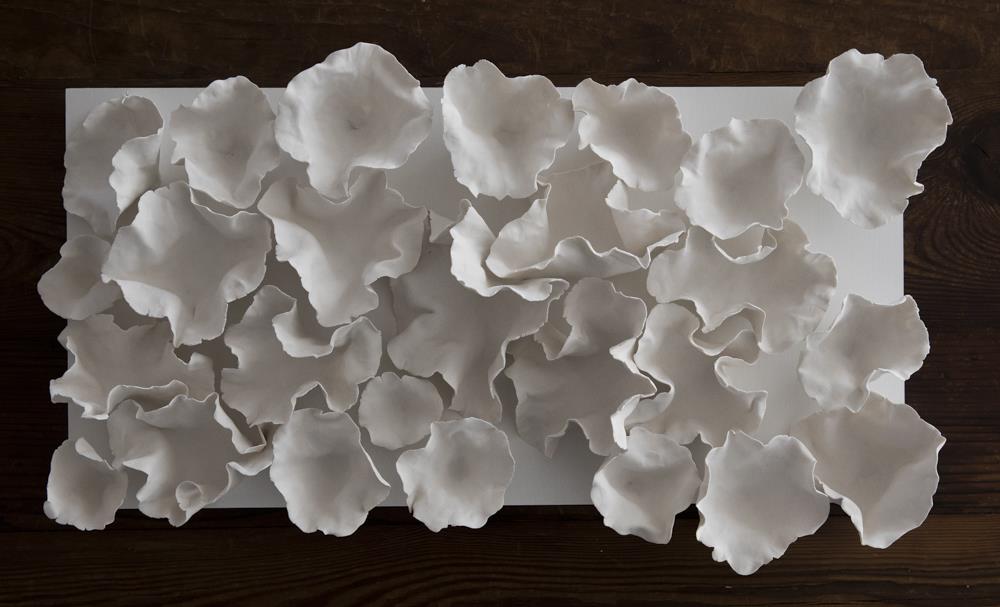
Yet she says she doesn’t intentionally set out to re-create a particular wave or flower she’s seen, instead letting the pieces form organically, without a set plan. “I don’t try to mimic anything; it just sort of stays in my mind as a shape,” she says. “I feel like it’s a relationship.… I love the excitement of not knowing what it’s going to turn out as.”
Another defining factor of Kasabian’s work is color: She typically glazes her pieces in shades of white. “The reason I glaze my work in white is because I feel natural light plays off this surface best of all,” she says. “The twists and turns and my hand can be seen best in the work.”
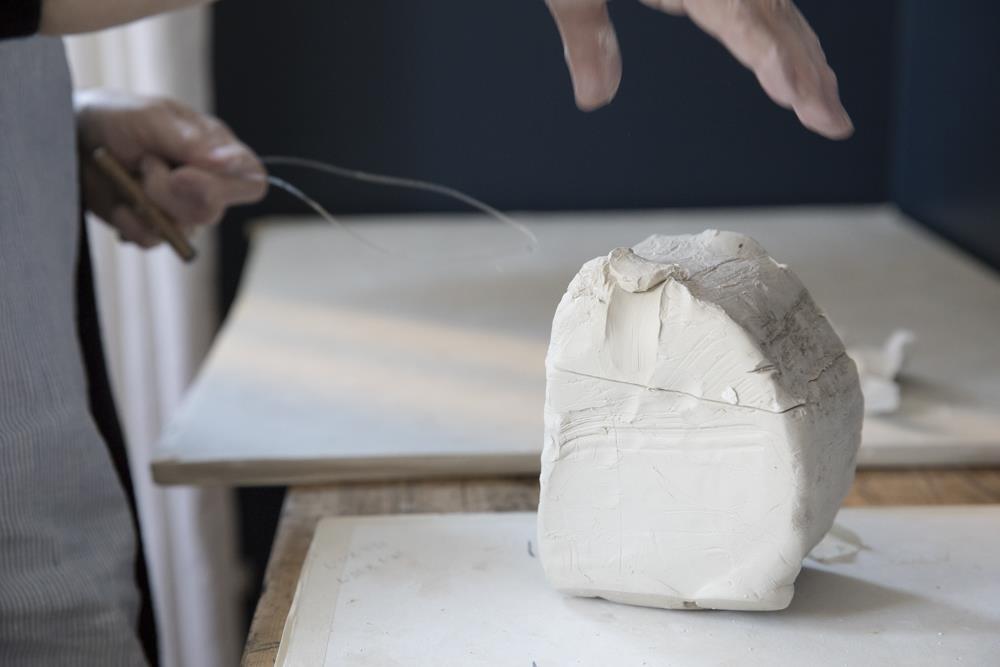
A close look at her collection reveals the ways that Kasabian is constantly pushing the boundaries of her medium and her skills, challenging herself to create pieces that are thinner, or larger, or that feature different shapes and ideas. “I feel like each season—every three or four months—my work changes a bit in terms of my learning of what I can do that’s a little more risky,” she says.
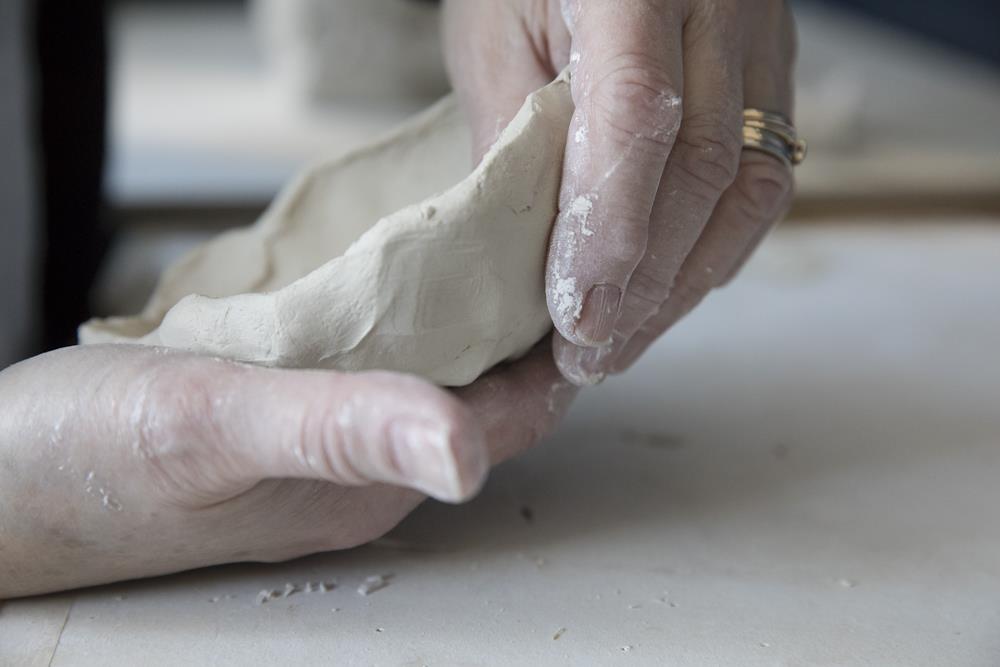
She points to pieces like Moon Tide, a 30-inch piece that’s nearly the length of her kiln; Oiseau D’Or, which features multiple sculptures that are affixed to a surface, “creating a floral energy”; and the challenging and complex Madame Caroline Testout, which Kasabian calls “less of an abstract and inching toward realism in terms of a flower.”
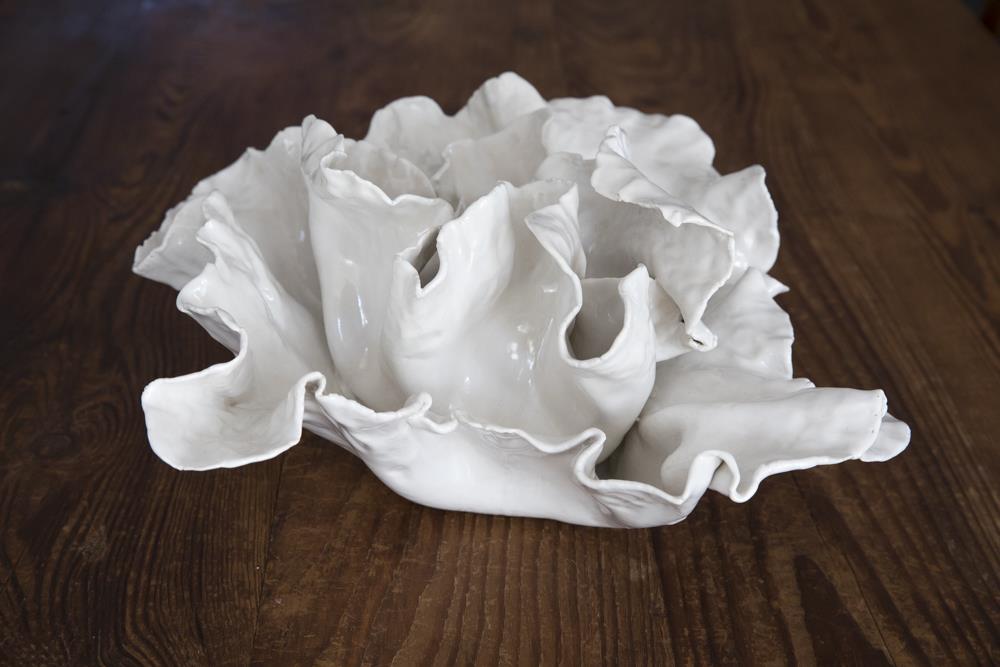
To listen to Kasabian talk about sculpture and see her work is to understand the joy of the artist. “If I didn’t have to sleep, I would be doing this 24 hours a day. This is really my oxygen,” she says. “I feel so happy that I am doing this and bringing something of beauty into people’s lives while I’m getting to do this in a joyful way.”
annakasabianporcelain.com

